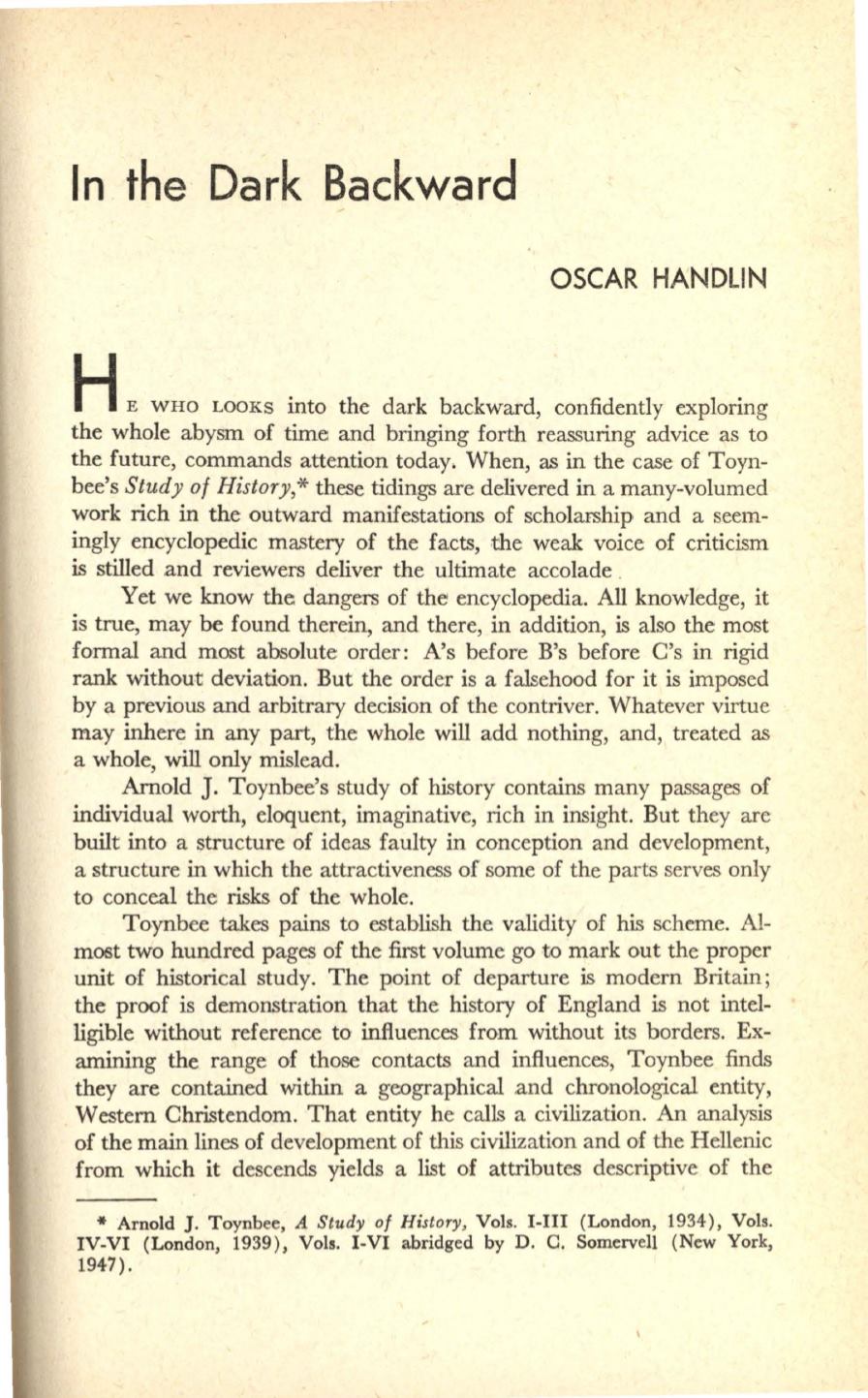
In
the
Dark Backward
OSCAR HANDLIN
H
E WHO LOOKS
into the dark backward, confidently exploring
the whole abysm of time and bringing forth reassuring advice as to
the future, commands attention today. When, as in the case of Toyn–
bee's
Study of History,*
these tidings are delivered in a many-volumed
work rich in the outward manifestations of scholarship and a seem–
ingly encyclopedic mastery of the facts, the weak voice of criticism
is stilled and reviewers deliver the ultimate accolade .
Yet we know the dangers of the encyclopedia. All knowledge, it
is true, may
be
found therein, and there, in addition, is also the most
formal and most absolute order: A's before B's before C's in rigid
rank without deviation. But the order is a falsehood for it is imposed
by a previous and arbitrary decision of the contriver. Whatever virtue
may inhere in any part, the whole will add nothing, and, treated as
a whole, will only mislead.
Arnold
J.
Toynbee's study of history contains many passages of
individual worth, eloquent, imaginative, rich in insight. But they are
built into a structure of ideas faulty in conception and development,
a structure in which the attractiveness of some of the parts serves only
to conceal the risks of the whole.
Toynbee takes pains to establish the validity of his scheme. Al–
most two hundred pages of the first volume go
to
mark out the proper
unit of historical study. The point of departure is modern Britain;
the proof is demonstration that the history of England is not intel–
ligible without reference to influences from without its borders. Ex–
amining the range of those contacts and influences, Toynbee finds
they are contained within a geographical and chronological entity,
Western Christendom. That entity he calls a civilization.
An
analysis
of the main lines of development of
this
civilization and of the Hellenic
from which it descends yields a list of attributes descriptive of the
*
Arnold
J.
Toynbee,
A Study of History,
Vols. I-III (London, 1934), Vols.
IV-VI (London, 1939), Vols. I-VI abridged by D. C. Somervell (New York,
1947).


